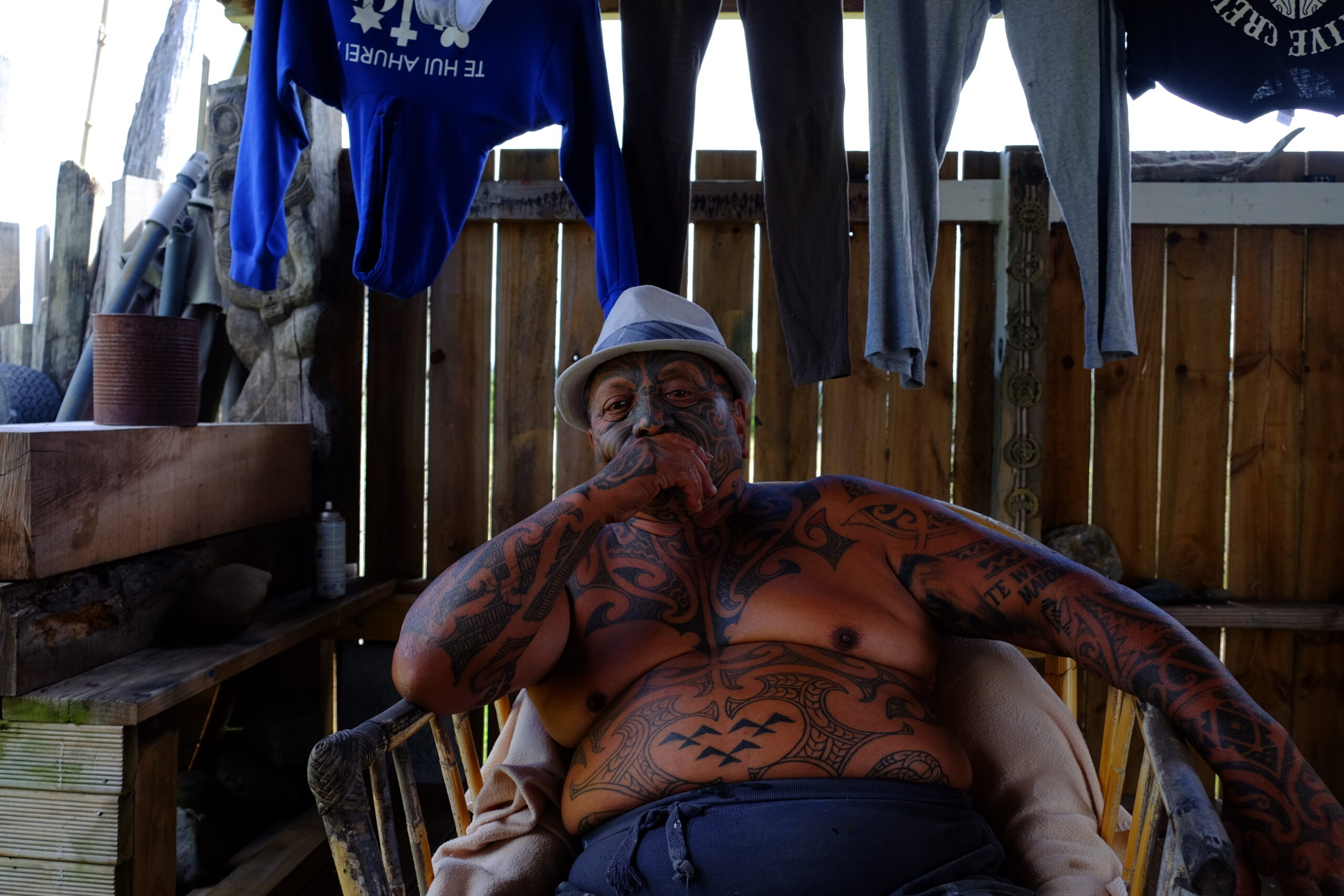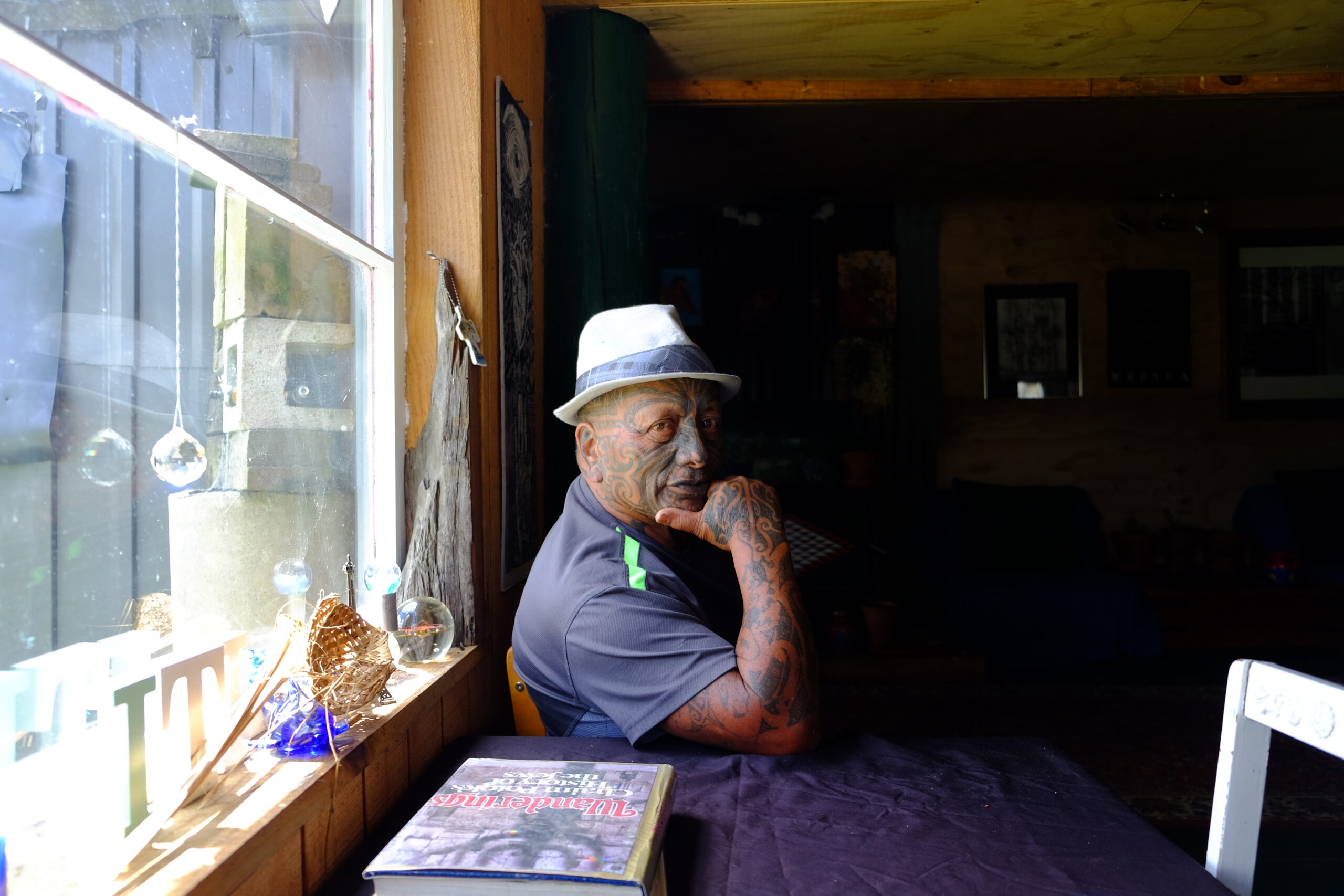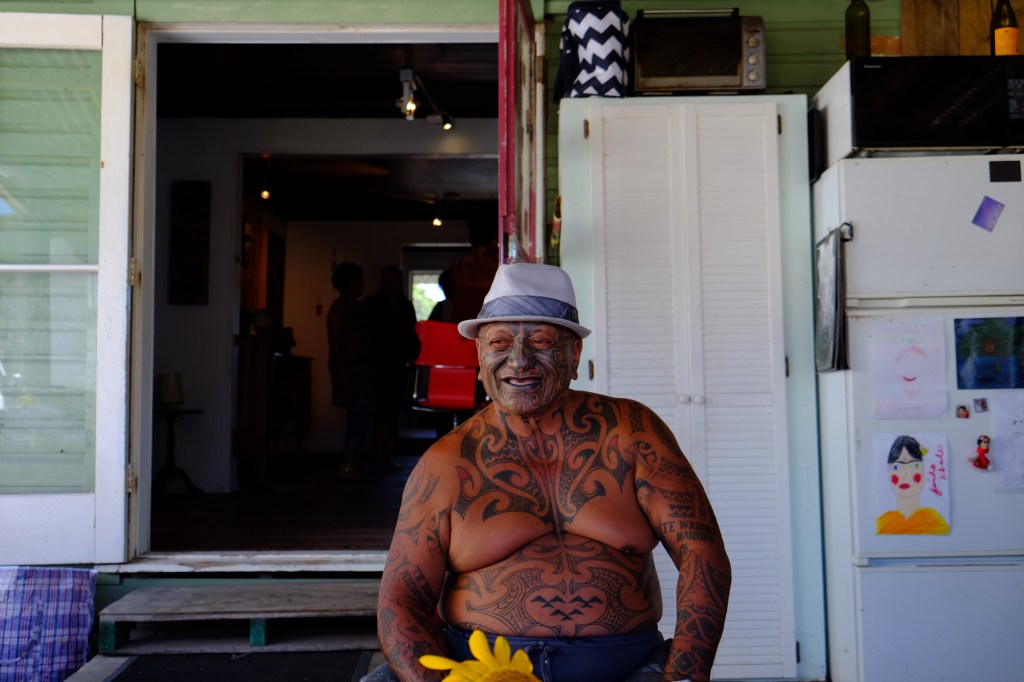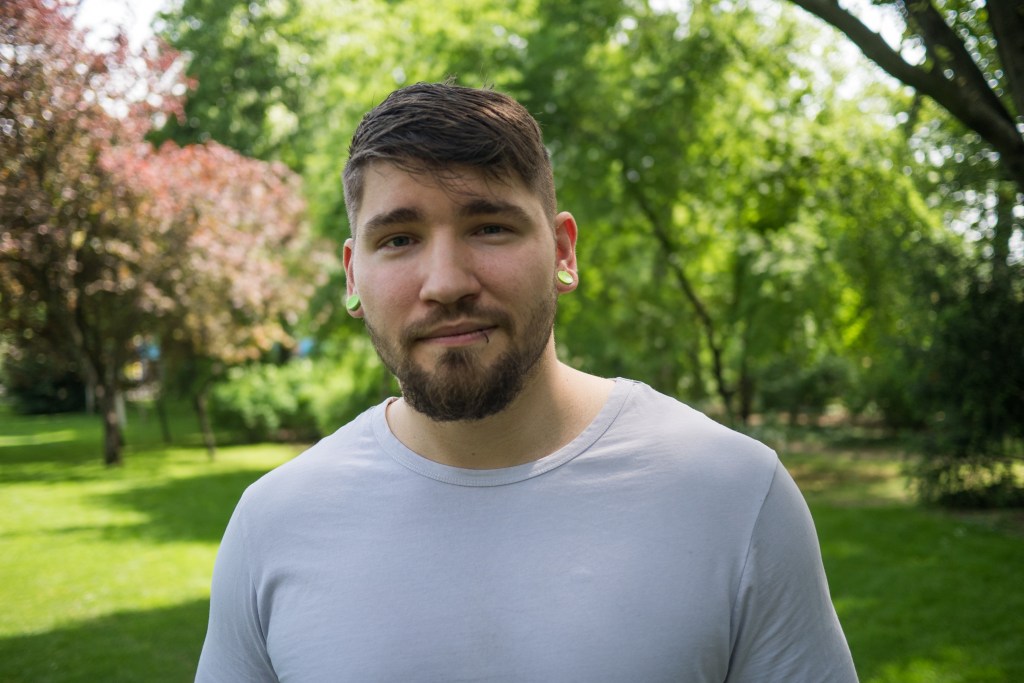Tame Iti is in his kitchen making toast.
He is back living in his home, a year back on tribal land after his time in a state prison. His family lives all around, brother out back, river at the front.
Videos by VICE
“This is Tūhoe country girl,” he says, pressing thick slabs of butter into fruit loaf.
“You’re right in the solar plexus of the Tūhoe nation.”
He carries the plates of toast out to the porch, sinks into a cane chair. The deck looks out over his garden. Tomatoes are getting ripe. Books for his grandchildren – Green Eggs and Ham – are on the coffee table. He has a low-pitched, rasping giggle that turns his face young.
He looks around at the home he’s built.
“Well, I’ve been here a year. Before that I was in jail. The state paints me to be this notorious bloody terrorist. Crazy stuff.” The chuckle, again.
“It’s non-compliant but it’s an artwork. My home is my artwork.”

It’s 10 years now since armed police squads descended on Ruatoki in the 2007 terror raids – the largest ‘anti-terrorism’ operation in New Zealand’s modern history. Police argued locals were running paramilitary training camps in Te Urewera. Five years since the court cases, where police tried first to bring terrorism charges, then downgraded to firearms offences, and participating in criminal group. Five years since Iti was sent to prison, and four since he was released. Around a year ago, after touring the country, he came back home to focus on his painting and start his own art gallery.
He pauses. “Have your toast first. Can’t talk and eat at the same time.”
Iti spent nine months in prison on the firearms charges. He isn’t interested in dwelling on it now.
“Oh I’m over that stuff. Long time ago. You have to, you gotta let it go. You can’t take ownership of something someone else fucked up. Not my fuckup, not my problem. They had a problem with me, with what I’m thinking – but what I’m thinking is not what they think I’m thinking.” He laughs again.

In 2014, the Police commissioner formally apologised to Tūhoe for wrong done to innocent people in the raids and the damage to the tribe’s mana. Does he hold any animosity about it now? Tame shrugs.
“You don’t have to be in jail to be in jail. A lot of people locked up, locked up in their own mentality. Can’t let it go. I mean yes, in the early days I was fucked off. You’re kind of sitting there, you lie in you bed thinking. But you don’t want to take ownership of someone else’s problem. I know I’m a free man.”
Iti has moved on, but the story of Tūhoe nation and its run-ins with the Crown are writ large across the landscape here.
Tūhoe never signed the Treaty of Waitangi, the agreement between the British Crown and Māori chief from around the country. “They didn’t bother coming to see us,” Iti says. “It doesn’t matter anyway, whether you sign or not, you’re still part of it.”
But locals still call this Tūhoe nation.
On the road from Ruatoki to Tāneatua, two girls on a horse ride bareback past the car. It’s still a common mode of transport out here.
“This here is the confiscation line,” he gestures out the window. “This is where we cross over.”
The Crown sent in troops along this line in 1866, confiscating 181,000 hectares of land from Tūhoe, Te Whakatohea and Ngati Awa. Tūhoe lost almost 6000 hectares, including their most fertile flat land and access to the coast. Famines in the following years killed off more than 23 per cent of Tūhoe’s population, most of them under 15 years old.
When armed offenders squads arrived in 2007, they set up roadblocks just inside the confiscation line.
Down at the gallery, the words “Suppression of Rebellion Act 1863” are daubed in white paint on the weatherboards of the gallery wall. It’s the legislation that was first used to confiscate Tūhoe land. On the opposite wall, Iti’s figures and more words spread across the outside out of the corner dairy, telling a more recent story:
“At 5:45 am today my household was woken by the sound of a megaphone: resident of 2/2 Weahika St, exit through the back door with your hands above your head,” the mural reads. “I was in a thin singlet and shorts and my mother in a nighty. We moved half asleep to the back door. I opened it and exited with my hands above my head. What I saw still shocks me: 10 members of the armed offenders squad aiming their guns at us.”

It’s via art that Iti is expressing his activism most often now. He doesn’t see it as a shift.
“Art is an intricate part of activism. To be an active participant, to try and provoke people’s thinking, to capture your audience. People that come and look at art, they’re looking for something. They’re looking for the moments, looking for the magic, they’re looking for many things.”
“Our job as artists is to dispel the illusions of fear. Fear comes from not really being clear on who you are—that’s my view around it.”
His works are often composed of hundreds of indistinct figures, silhouetted by light or obscuring it. Often hundreds of figures layered over each other, forming cresting waves and landscapes of their own. More recently, he’s collaborated with portraitist Owen Dippie to put the faces of Tūhoe on walls and buildings around the region. Down the road, a kuia looks out at the war memorial.
***
Tāneatua Gallery sits just off the main road through town. The green weatherboards are flaking. Trina Love, the Gallery manager, wrangles a steady flow of visitors. Some from out of town, often Pakeha, asking about prices. Others are locals, stopping out back for a cup of tea, a smoke.
Out the back, there’s a caravan—”the penthouse,” says Trina Love—a stove, a fridge full of beer and a battered couch. There are a couple of people here working on a “decolonise your wardrobe” workshop with artist Ron Tekawa. Someone is boiling eggs.
“The gallery is a space. We are creating a space,” Tame says. “I didn’t really want an Auckland. I was creating a space where all kinds of people can come to.
“Our gallery in the old days was our tipuna whare, our meeting house, a gallery where they hang their work—the kōtukutuku, the kōwhaiwhai. And so the people in Tāneatua, Ruatoki, Ruatāhuna, they can come in here.”
The exhibition rooms are often full with visitors, but the backyard of the gallery is its true hub. Later, there are pork bones for the pot and slabs of beer, and soon the air is thick and sweet with the smell of cooking meat and boilup.
“It took us a year and a half to capture the audience. Now, Auckland come to Tāneatua. Wellington come to Tāneatua. They come to the gallery at Tāneatua, we don’t have to go to Wellington. The bulk of the people who purchase the work are mainly outsiders.
Three Pakeha women walk through. They’ve driven here all the way from Waiheke, and want to know if Tame has any exhibitions planned in Auckland.
He looks up over an egg sandwich.
“See? Auckland come to Tāneatua.”
In recent years, Tūhoe has won some major battles. Most significantly, in 2014, the settlement that awarded Tūhoe $170 million in reparation for stolen land. It included a Crown apology for past atrocities: wrongful killings, illegal land grabs, and scorched earth warfare. The land previously known as Te Urewera National Park and administered by the government was returned to Tūhoe control.
It means a new era for the tribe, Iti says—but colonisation forces dependency, and change will take time.
“We’ve never been in a position to be in charge of our own destiny. We’ve always been slave labour, a slave mentality, co-dependency syndrome… It’s like being in a violent relationship with a man or a woman, you know—you still go back to it. They still go back to the same scenarios, and you say, ‘Why you want to go and do that? Why you want to go and live with him, he’s just going to give you another hiding. How many hidings you want?’
“But it’s the same, it’s codependency and sometimes people cannot let it go. They think, don’t want to lose it and they still hold on. So the biggest challenge for us is the telling ourselves, we have to be in charge of our future. What does that look like?”
It’s been 170 years since colonisation began in New Zealand, he muses. It’ll take a little time.
“But the future for Tāneatua, for Ruatoki, it’s an exciting time for us, and we haven’t quite really started yet in my view.”
“We’re yet to create amazing things.”




